Would you allow your children to walk barefoot outside? What about if they grab a handful of dirt and shove it in their mouth? As an intentional parent, I’m always debating the benefits and issues with permitting my children to do certain things.
I recently visited a fellow blogger’s website and enjoyed the pictures she had posted of children playing and walking barefoot in her child care program.
As an Early Childhood Professional who’s worked in the field for over twenty years, I can’t help but reflect on the most popular rule in schools and childcare centres… shoes must be worn at all times.
Why?
Fire regulations? The possibility of hurting one’s foot? At what point do rules such as these take away from a child’s sensory exploration of their world? Moreover, at what cost to a child’s development do we impose such rules?
Eat dirt and walk barefoot... do you allow your children to do it? #parenting Click To TweetUpon searching for a document that investigates the pros and cons of walking barefoot, I came across an interesting article that proclaimed barefoot is best for children. The claims in the article are based mostly on the physical ramifications of wearing shoes at too young of an age.
THE SENSORY SIDE
As I contemplated this, is realized that there is the sensory side of going barefoot. The freedom to feel the earth beneath you is grounding. In addition, to decipher feelings and textures with one’s feet is a unique experience in and of itself.
Just think of all the activities that are done barefoot… martial arts, yoga, swimming, walking on the beach, gymnastics, balancing on a beam, dancing, and the list goes on and on. Imagine forcing someone to wear a pair of shoes while doing these activities? The activity itself wouldn’t be as enjoyable would it?
So why do we force our children to wear socks and/or shoes when they don’t really have to?
WHAT ABOUT OTHER SENSES?
What about the other senses? A couple days ago my daughter was making “cookies” with her homemade play dough. I suddenly realized that she was really eating pieces of the “cookies” that she had made.
My instinct? I told her to stop.
Why? Wouldn’t it be best for her to realize that it’s not the tastiest thing available? Couldn’t one argue that she’s learning something about the play dough by tasting it?
Infants and toddlers are especially sensory beings. It’s up to us to make sure that they get the opportunity to use their senses rather than stifle them! Isn’t this why we buy the non-toxic crayons, we make our own playdough, and we make goop out of cornstarch and water?
WHAT ARE WE TEACHING OUR CHILDREN?
However, what are we teaching our children about the world when we impose so many rules and restrictions? Do you let your children play in mud, splash in puddles, play with insects, and climb trees?
Overprotective care within the parameters of parenting, schooling, and child care seems to be escalating.
I’m not saying to let children play on the highways, but what harm could really come from letting them walk barefoot in the backyard or eating a little dirt?


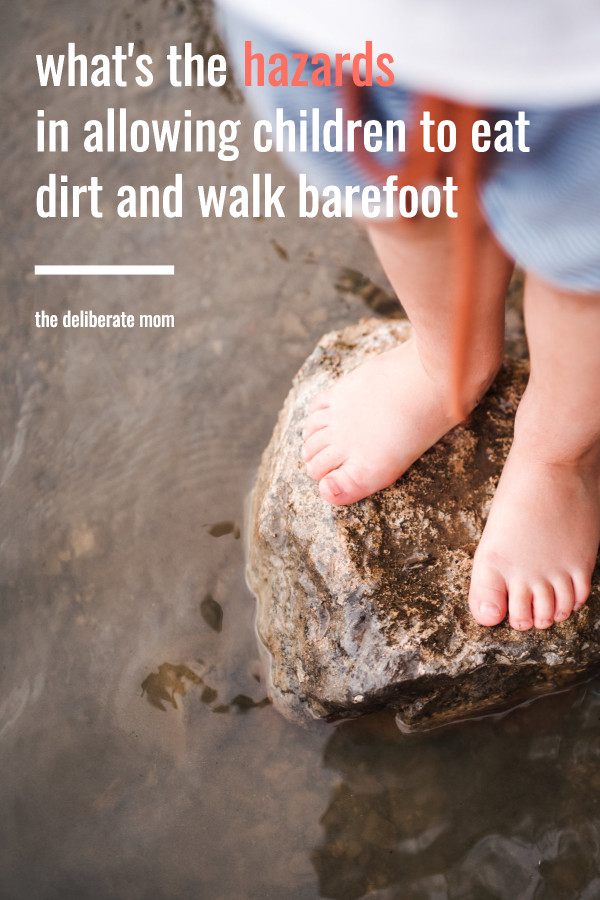
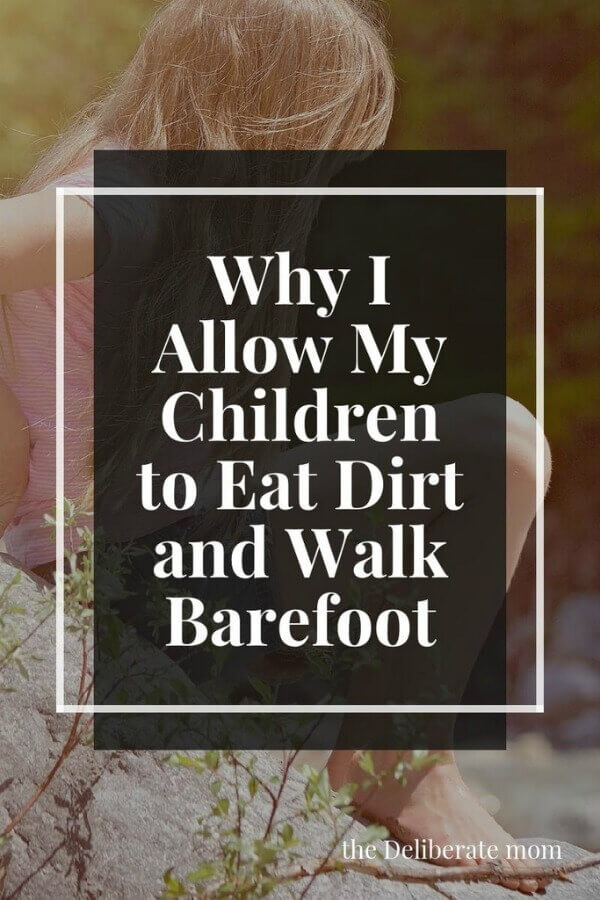
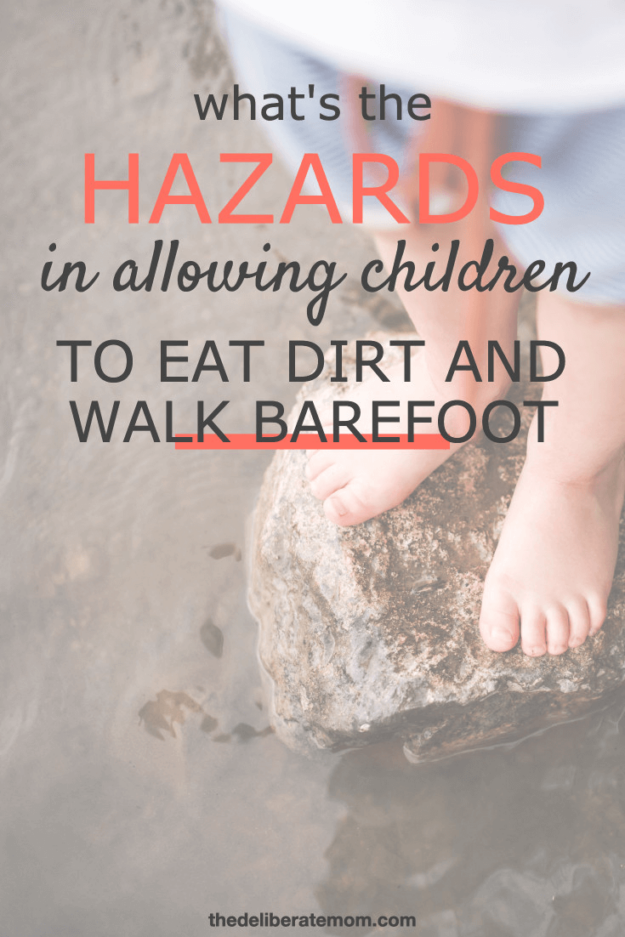
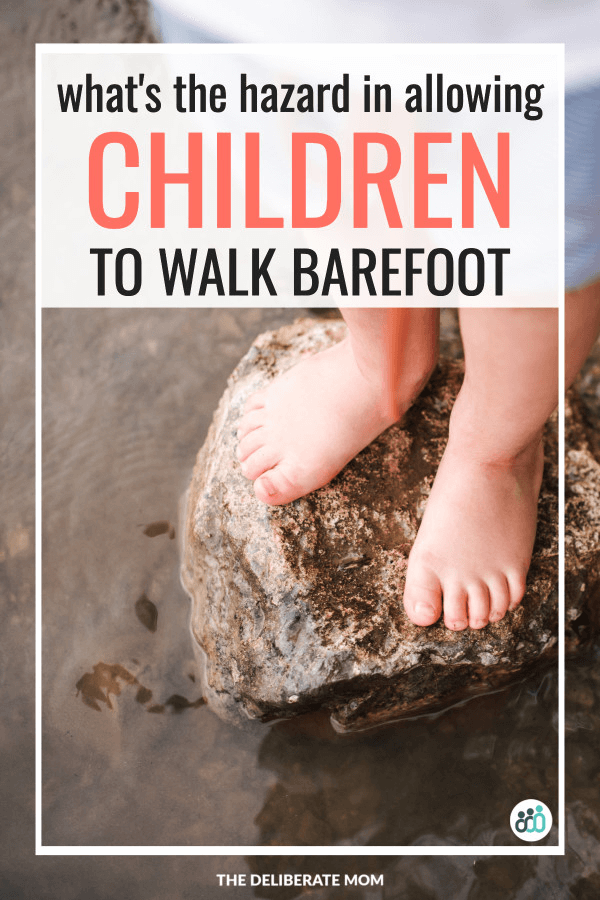
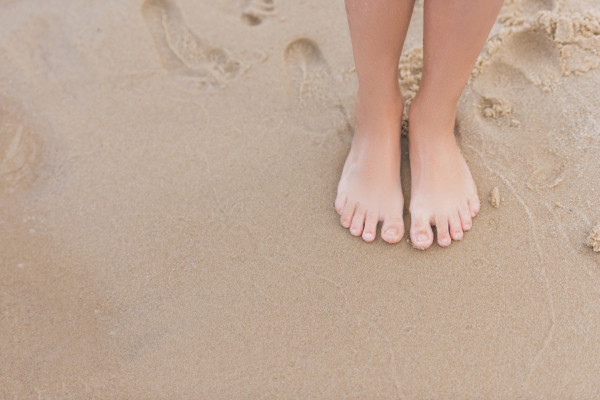
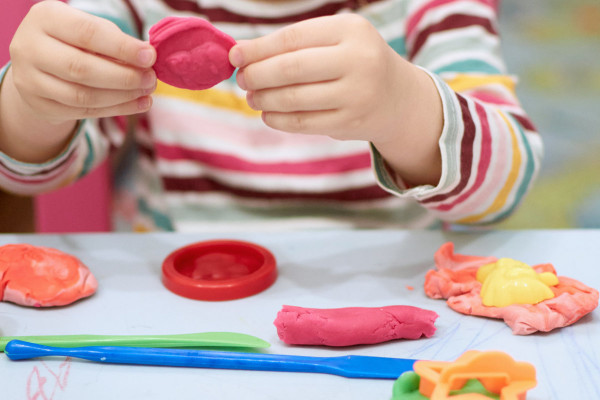
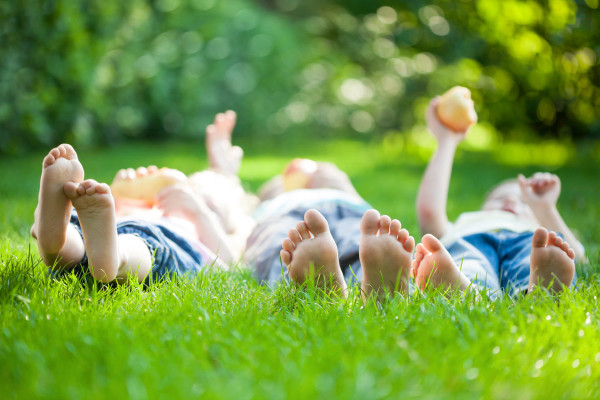






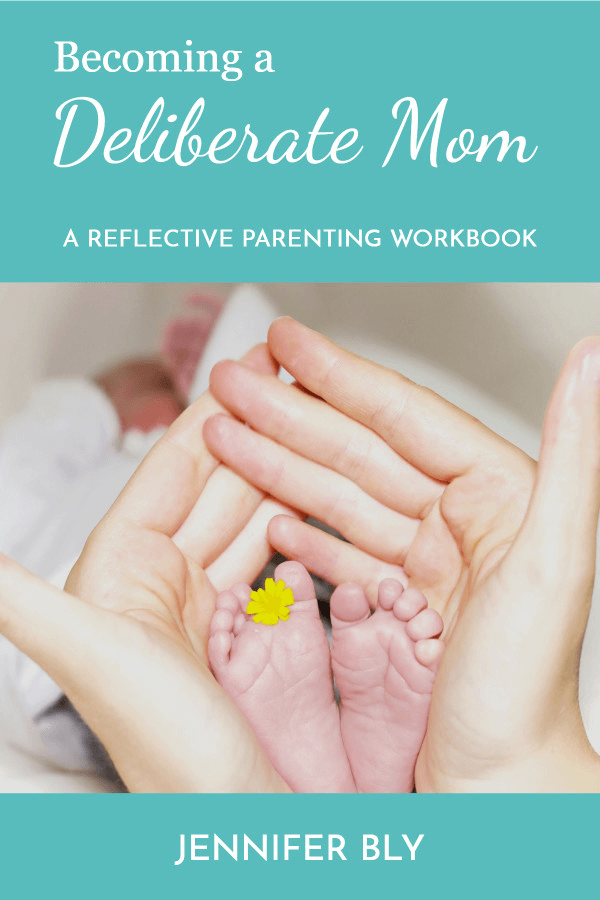
Very true! I let my daughter play around on the carpet when visiting the staff room early last week and a coworker was aghast and said “oh germs!” Good grief, a little dirt isn’t going to hurt. There is no way that the university staff room (we eat there!) is any dirtier than the park sand, the library program room, or rec centre gym (all places she hangs out). Babies and toddlers are always so confined these days in some type of carrier or seat when the best place for their development is rolling, crawling, walking, and discovering their own bodies. My daughter was able to explore, visit, and interact with this new environment on her own terms, gaining happiness, confidence, and physical exercise. Like you say, as long as the environment is safe within reason what is wrong with a little dirt!
I agree with you totally.
It’s the barefoot thing! I know!
My husband read “Born to Run” (which everyone who’s read it says it is amazing – it’s next on my list if I can ever get a chance to read again…) and now, they go barefoot almost EVERYWHERE.
My husband is also a huge bio-mechanics nerd and has done tons of research and is of the firm belief that bare-foot is best for everyone. I have to agree.
My arches fell and I have had to wear orthotics in my shoes 24/7 (inside the house as well) for YEARS. I was told by several professionals that this was not fixable and I would have to wear supports indefinitely. Since going barefoot as often as possible and doing a posture therapy program, my arches have since come back and now I don’t have to wear my orthotics anymore. At all. The key was listening to by body and putting on my supports when my feet hurt. Slowly but surely, I wore my shoes less and less.
Anyway, yay barefoot!!
@saspell You raise a great point. “Avoiding” germs is actually not good for our children’s immunity. Recent research is showing this quite clearly. Placing our children in sterile, antibacterial environments is actually putting their health at risk.
Plus, as you shared, young children’s development is potentially compromised when they’re placed in confining environments. Thank you for sharing such insightful observations.
@natalie I’ve heard about Born to Run. I would love to read it too! Hopefully some day soon I’ll be able to read again (both hands are quite busy lately).
There’s a whole barefoot culture out there! I was astounded at the amount of groups, websites and research around this topic. You should check out http://www.barefooters.org if you have a chance.
LOVE this post. Thanks for the reminder to let my kids be kids and enjoy the world around them. It is so true that they learn through sensory and exploring. I used to love running around in the soft, green grass of our backyard growing up, I loved that feeling on my bare feet. I find myself always making rules and not letting my kids doing things because society says it is not ok. I’m going to try harder to let them ENJOY and LEARN the way they want to. Of course I will keep them safe but like you said walking around barefoot and eating a little dirt isn’t going to hurt them. Emily
Thanks so much Emily. I’m so pleased you enjoyed this post. It’s hard to question and let go of the rules… especially when they seem to be such common practice. Wishing you well.
So true! I just loved running around barefoot as a child (still do!) and so I let my kids do it too! I am a “go ahead and get dirty, let’s have fun” kind of mom. We are just creating wonderful memories! :)
Yes… and those memories last a lifetime!
Thanks for reading and sharing.
My kids run barefoot all summer! As for eating dirt, I’m not sure I really want to know how much they’ve eaten… I will never forget when I found my firstborn with a dirty fist and mouth and when I tried to empty her hand so she wouldn’t eat any more “dirt” I found half a worm. I almost lost my lunch that time, but by the time my third baby came along I was able to shrug such things off a lot easier ;)
Because we homeschool and don’t let our children do some things that other children their age are doing we are considered “helicopter parents”, yet our children have plenty of freedom! They are always outside on our farm – barefoot, climbing trees, playing with bunnies and kittens, digging in the dirt or the sand box, chasing butterflies, getting scrapes and bruises and loving every minute of it! Sure we have to take care of the scrapes and pull slivers out of their bare feet, but it’s all part of the learning experience :) They know to be careful when climbing trees because it hurts to fall out! They know that when we are picking raspberries it’s better to wear shoes, pants and possibly even a long sleeve shirt. They know that bunnies and kittens will scratch and even bite if not handled gently. They are learning and growing and healthy despite, and maybe even because of, their bare feet and dirt :)
I love the experiences that you’ve shared here Missy! I homeschool as well and some of the best learning is the “messy”, free-flow, learning!
Ok, how cute are your girls as littles! They look so tiny! I don’t mind letting my daughter go barefoot whenever she wants (as long as it’s safe). And she has eaten more leaves and petals than I care to count. Usually she spits them out once she tastes them though. :)
You gotta let them build up their immune system I say. :)
xoxo
I feel there’s so much to be experienced from exploring the world in a sensory way!
I can distinctly remember the taste of all sorts of things (dirt, glue, sand, metal, etc.)… so I know my parents raised me in a very similar manner.
Wishing you a lovely weekend.
xoxo
Hi Jennifer, I think that this is a great post. My son didn’t have his first pair of shoes until he was gone two – he was a late walker! – and then I didn’t overly encourage it as I love walking barefoot myself.
My daughter was younger when she got her first pair of shoes as she walked young and it was winter.
Children should be allowed to explore the world around them safely, by getting dirty, climbing trees and rolling naked and barefoot in the sand at the beach and it should be a compulsary part of growing up. My daughter would eat sand to the extent that she would poop it out, which I did mention to the Doctor, who said it wouldn’t hurt her.
Although when she picked a load of green stuff from the hedgerow, ‘cooked it’ and really ate it, I did watch her like a hawk and told her that she really shouldn’t eat everything she picked unless she ran it by me first. Not all green stuff is safe to eat!
I encouraged jumping in puddles and still do, although my two now think I’m barmy. Rolling down hills and walking along walls are all things children should have to do. Eating grass/mud/sand and playing with worms/insects/bugs are all fine too, just so long as there is no cruelty to the living creatures involved. The pulling of legs off an insect should never be encouraged!
Children are only young once and could learn so much by being allowed to explore their surroundings.
I’m so glad you enjoyed this post Debbie and I love all the experiences you’ve shared here as well. Delightful learning comes from sensory, hands-on experiences!